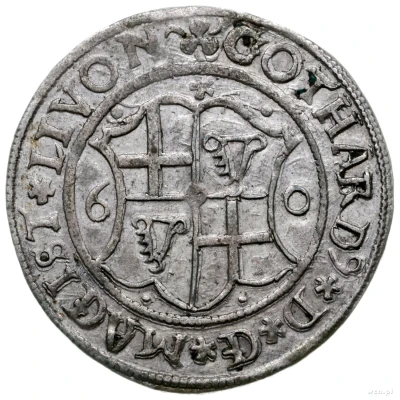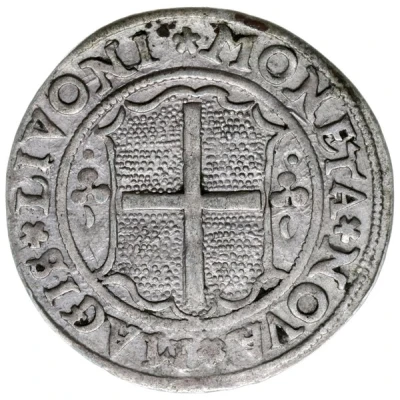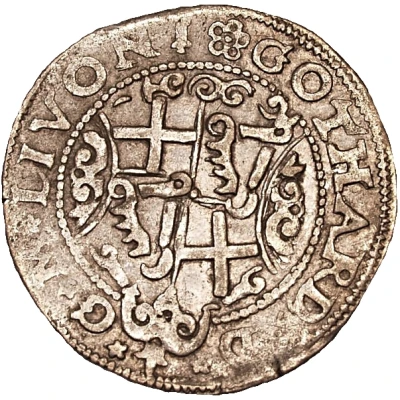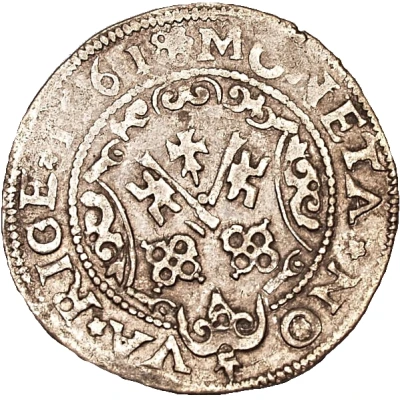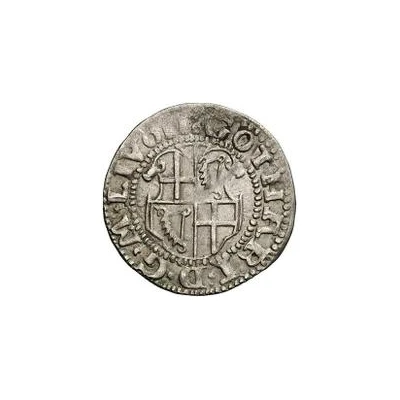
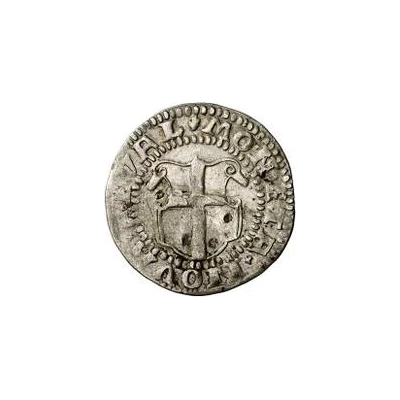

© Fritz Rudolf Künker GmbH & Co. KG, Osnabrück und Lübke + Wiedemann KG, Leonberg
1 Ferding - Gotthard Kettler Reval
| Silver (.578) | 2.46 g | 24.5 mm |
| Issuer | Livonian Order (Livonian Confederation) |
|---|---|
| Master | Gotthard Kettler (1559-1661) |
| Type | Standard circulation coin |
| Years | 1560-1561 |
| Value | 1 Ferding = 9 Schilling |
| Currency | Schilling (1422-1561) |
| Composition | Silver (.578) |
| Weight | 2.46 g |
| Diameter | 24.5 mm |
| Shape | Round |
| Orientation | Variable alignment ↺ |
| Demonetized | Yes |
| Updated | 2024-10-06 |
| Numista | N#133333 |
|---|---|
| Rarity index | 97% |
Reverse
Cross in shield and surrounded by legend.
Script: Latin
Lettering: MONETA · NOVA · REVAL ·
Translation:
Moneta Nova (In Argentea) Revaliensis
New (silver) coin of Reval
Edge
Plain
Comment
In 1561, the silver constant was reduced to .531 silver.The exact lettering of the surrounding legend may vary.
No date (1560):
1) GOTHART · D · G · M · LIVON / MONETA · NOVA · IN · ARGE · REVALI ·
2) GOTHART · D · G · M · LIVON / MONETA · NOVA · IN · ARGE · REVA ·
3) GOTHART · D · G · M · LIVON / MONETA · NOVA · REVALI ·
4) GOTHART · D · G · M · LIVON / MONETA · NOVA · REVAL ·
5) GOTHART · D · G · M · LIVON / MONETA · NO · IN · REVA ·
1560 (date on reverse):
1) GOTHART · D · G · M · LIVON / MONE · NO · REVALIE · 60 ·
2) GOTHART · M · LIVONI / MONE · NO · REVALIE · 60 ·
3) GOTHART · M · LIVONI / MONE · NO · REVALI · 60 ·
1560 (date on obverse):
1) GOTHART · M · LIVON · 60 / MONETA · NO · REVALIE ·
1561:
1) GOTHART · M · LIVONI / MONE · NO · REVAL · 61
Interesting fact
One interesting fact about this coin is that it was minted during a time of great turmoil and change in the region. The Livonian Order, a military order of German knights, had been ruling over the territory that is now Latvia and Estonia for centuries, but in the 16th century, they faced challenges from the Grand Duchy of Lithuania and the Kingdom of Poland. This coin was minted during the reign of Gotthard Kettler, who was the last Master of the Livonian Order and the first Duke of Livonia, and it reflects the political and economic changes that were taking place in the region at that time.
